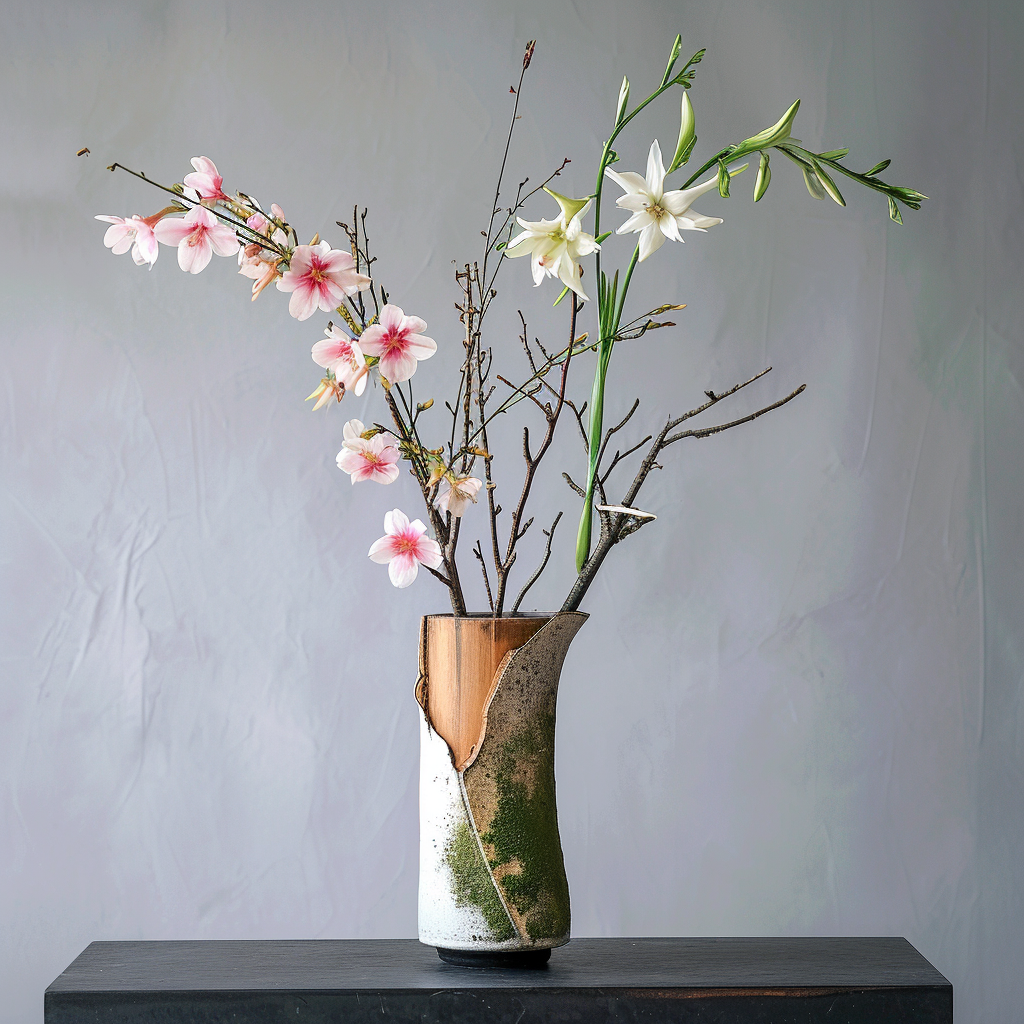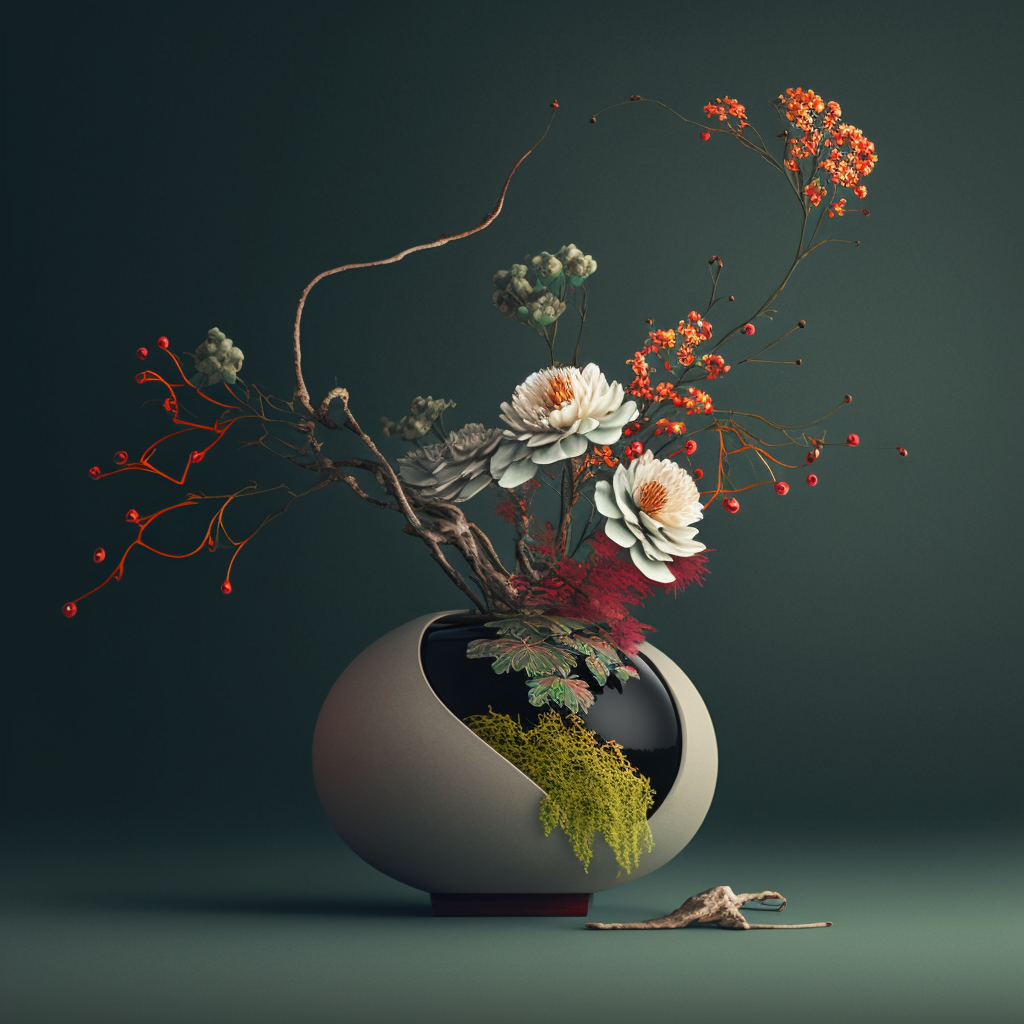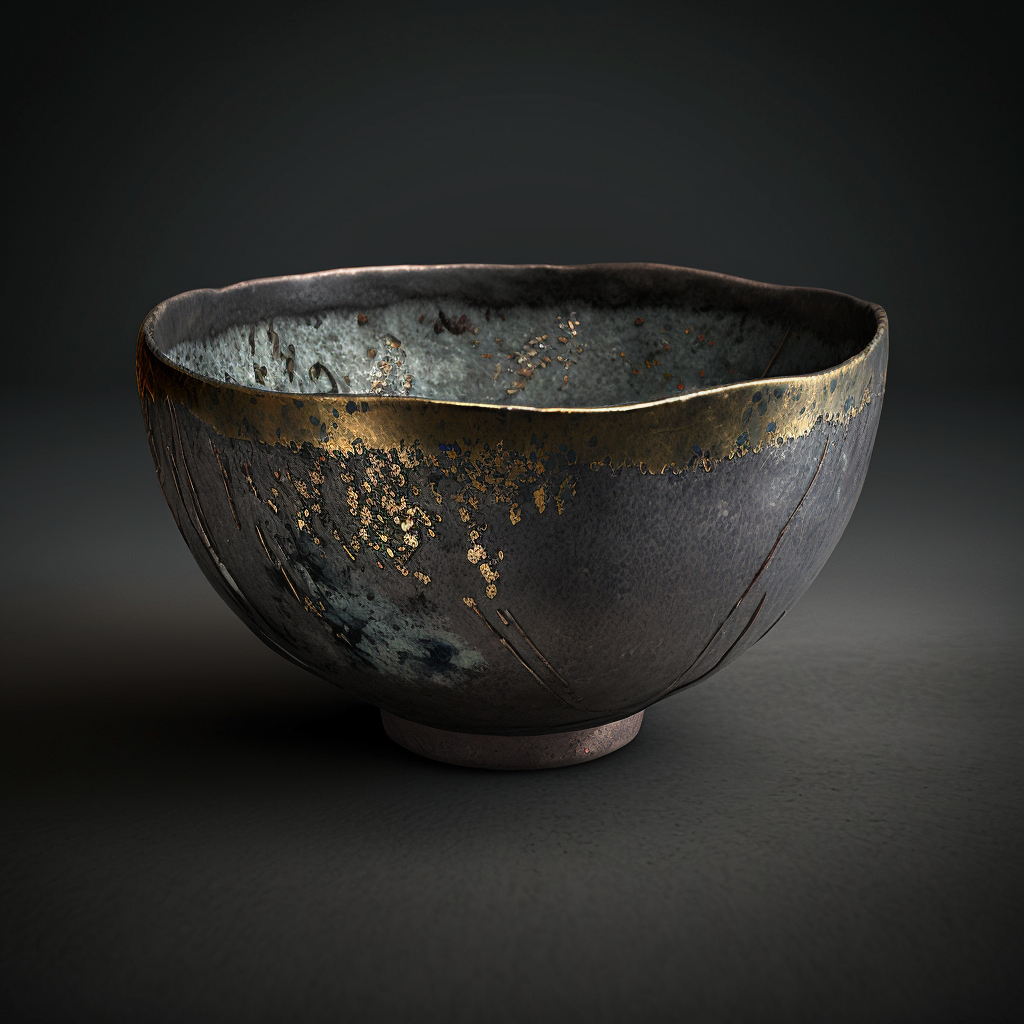The Mishō-ryū school, also known as 未生流, is a school of Ikebana, Japanese floral art. Founded in 1807 by Mishōsai Ippo during the late Edo period in Osaka, it prospered despite the challenges of time. Let’s dive into the captivating history, founding philosophy and distinctive styles of this floral school.
Historyof the Mishō-ryū School
Established by Mishōsai Ippo in 1807 in Osaka, the Mishō-ryū school was a pioneer in the art of Ikebana. At the time of its founding, city culture was flourishing, attracting many disciples. Although it experienced periods of decline, the school regained prominence in the Kinki region during the Shōwa era after enduring the hardships of World War II. The founder, Mishōsai Ippo, was inspired by the religious ideas of Confucianism, Taoism and Buddhism. He integrated the search for inner peace into the school’s philosophy.
Styles
Kakubana (格花) – Also called Seika in other schools. This traditional style aims to create arrangements in the shape of a right isosceles triangle. He is distinguished by a sense of spirituality and an awareness of “Heaven, Earth, Human” (天地人 Tenchijin). In short, these are the three essential elements of the human universe, represented by various axes in the arrangement.
Distinct and Geometric Shape:
The Kakubana is distinguished by its simple and perfect geometric shape. A circle expresses the dynamic and limitless nature of the sky, while the inner square defines the four seasons and four directions of the earth. Two triangles are formed by bisecting the figure at four corners.
Shape Details:
Inside the triangles, three branches are arranged. The tallest branch represents the sky (Ten), the medium-sized one the human being (Jin), and the shortest symbolizes the earth (Chi). This idea forms the fundamental principle of Kakubana, expressing a deep appreciation of the harmony between nature and humans through a simple geometric design.
Shin-ka (新花), the modern style of the Misho School, is divided into two well-defined categories: Moribana and Heika.
- Moribana: Generally uses wide, shallow vases. This approach highlights the floral arrangement in a more expansive way, allowing the arrangements to express a unique visual harmony.
- Heika (瓶花): Favors the use of long and narrow vases. This style emphasizes verticality, creating elegant and balanced compositions.
Freedom of Expression:
These modern styles, introduced relatively recently into the Misho School, offer greater freedom of expression to floral artists. Breaking with certain traditional constraints, Shinka emphasizes the harmony of colors and the physical quality of materials, allowing arrangers to communicate their emotions in a more free and direct way.
Diversity Within Shinka:
Within the framework of Shinka, we also observe the subdivision of the style into several distinct groups. One of these groups, Zokei, stands out as a particularly different expression of the conventional Ikebana of the Misho School. In Zokei, not only unique materials such as stems, roots and leaves are used, but also artificial materials, thus introducing an innovative and contemporary dimension.
The Mishō-ryū school remains a beacon of Ikebana, offering a floral experience steeped in history and philosophy. Through her traditional and modern styles, she continues to evolve, captivating the eye and elevating Japanese floral art to new heights. By exploring the teachings of Mishō-ryū, each arrangement becomes an artistic expression imbued with serenity and reflection, honoring the legacy of Mishōsai Ippo.



